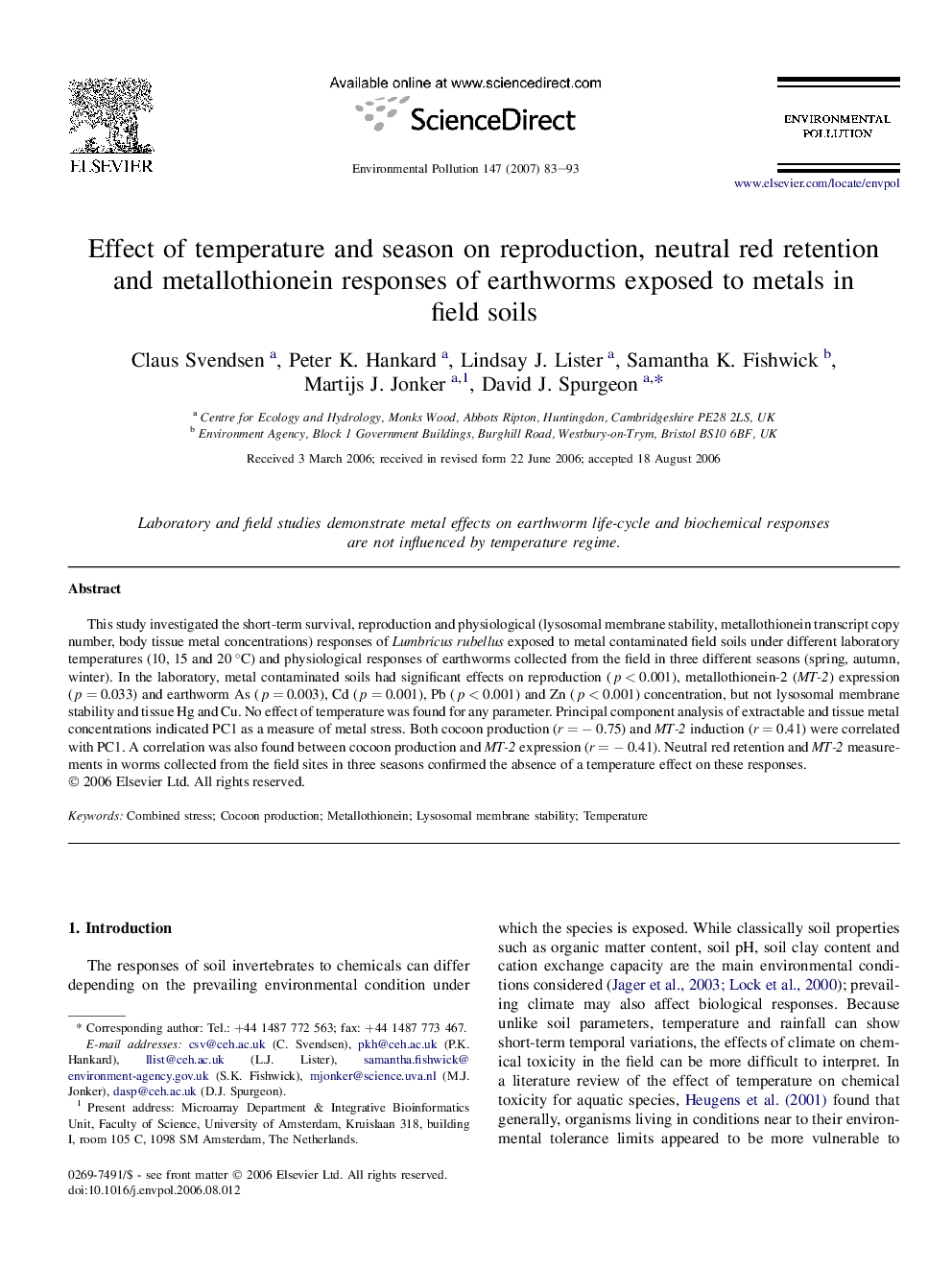| Article ID | Journal | Published Year | Pages | File Type |
|---|---|---|---|---|
| 4427069 | Environmental Pollution | 2007 | 11 Pages |
This study investigated the short-term survival, reproduction and physiological (lysosomal membrane stability, metallothionein transcript copy number, body tissue metal concentrations) responses of Lumbricus rubellus exposed to metal contaminated field soils under different laboratory temperatures (10, 15 and 20 °C) and physiological responses of earthworms collected from the field in three different seasons (spring, autumn, winter). In the laboratory, metal contaminated soils had significant effects on reproduction (p < 0.001), metallothionein-2 (MT-2) expression (p = 0.033) and earthworm As (p = 0.003), Cd (p = 0.001), Pb (p < 0.001) and Zn (p < 0.001) concentration, but not lysosomal membrane stability and tissue Hg and Cu. No effect of temperature was found for any parameter. Principal component analysis of extractable and tissue metal concentrations indicated PC1 as a measure of metal stress. Both cocoon production (r = − 0.75) and MT-2 induction (r = 0.41) were correlated with PC1. A correlation was also found between cocoon production and MT-2 expression (r = − 0.41). Neutral red retention and MT-2 measurements in worms collected from the field sites in three seasons confirmed the absence of a temperature effect on these responses.
